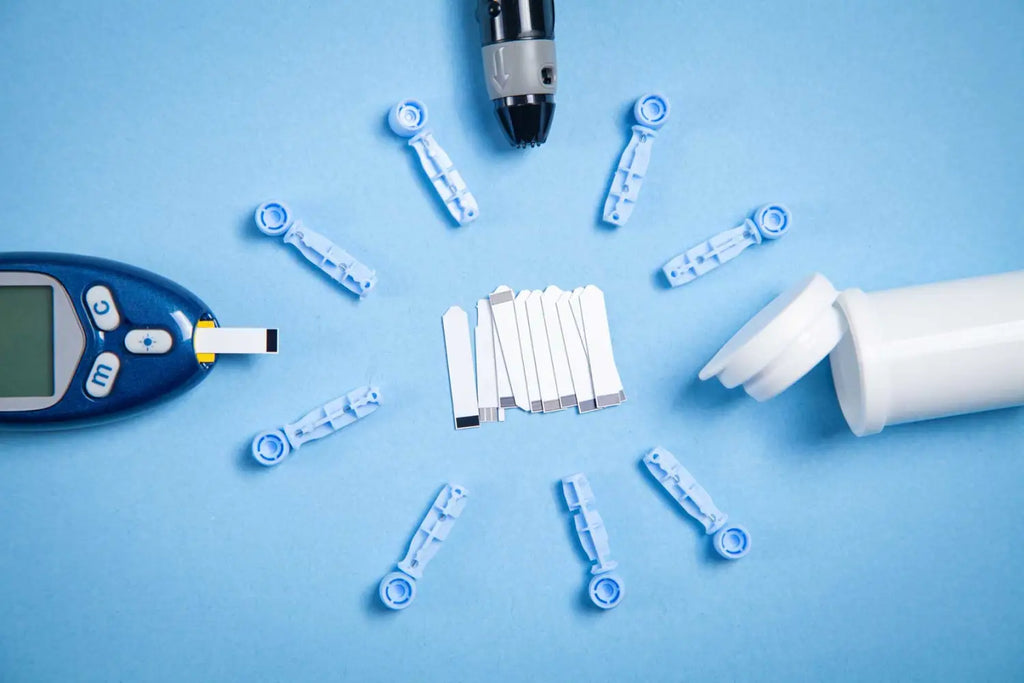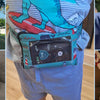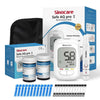Medical Accessories Type 1 Diabetics Use Daily
-
Published on
Last updated on

Diabetes has evolved as a long-term health problem with no proper treatment. Persons who have diabetes must rely on various medical equipment and lifestyle changes to control symptoms. Diabetes affects around 463 million adults globally, and its prevalence is anticipated to reach 700 million by 2045.
This guide lists a selection of medical products used by people with type 1 diabetes. It does not represent an endorsement, nor does the manufacturer, distributor, or maker of these products. Like any other severe disease, diabetes cannot be cured overnight. Sufferers must make steady and continuous efforts to maintain their health to enter a better state over time.
In addition to making healthcare visits regularly, several medical devices are designed specifically for diabetes patients who suffer from high blood sugar levels. Each plays a notable role in treating diabetes and managing situations before any complexity.
1. Measuring Blood Glucose Levels
Blood glucose levels can be measured in two ways.
-
- Glucometer: It is a traditional fingerstick testing device; wash your hands and insert a test strip into the device. Use an alcohol swab to clean your fingertip and produce a blood drop with a lancing device to read blood glucose through a glucometer. Keeping track is an excellent way to show the doctor about your current health and help to update the care plan if necessary. Most monitors save your history of glucose readings, or you can write it manually or track it via the app.
-
- Continuous Glucose Monitoring: This method applies to the sebaceous fat layer of either arm or stomach. A sensor is inserted in it, which communicates with a transmitter that is connected to a smart device via Bluetooth. If the glucose level is too low or high, the transmitter triggers an alarming situation, and the paired app shares insights about maintaining their glucose levels. One of the benefits of this continuous method comes with the data history shared with physicians to get highly personalized treatment.
2. Insulin Level Management
-
- Insulin Syringe: It is a highly affordable and standard method to inject insulin with syringes.
- Insulin Pens: There are two primary types of insulin pens. Disposable pens come with a filled cartridge and are wasted once used. While in Reusable pens, the cartridge can be refilled.
- Insulin Jet Injector: This method uses pressure instead of a needle to spray insulin into the skin.
- The insulin pump is attached to the patient's clothing and joined to a catheter placed under the skin via needle. The device better controls blood glucose levels by giving regular insulin doses to the body on demand. It's necessary to carry batteries and insulin pens if you rely on an insulin pump.
3. Ketone Level Measuring Devices
-
- Ketone Test Strips: The ketone test is elementary to perform. Pee in a clean bottle, shake it and see the color change as it responds to blood glucose levels. You are advised to visit your physician in either higher or lower case.
- Ketone Meter: Some glucose measuring meters can also share information about ketonic body levels. After pricking the finger, place a blood droplet on a ketone test strip and visit your doctor in cases other than usual.
4. Basic Skin Care Supplies
Unfortunately, diabetes can affect the skin; it is good to care skin by drinking plenty of water and applying lotion with avoiding hot baths. Further suggestions include using moistening soaps and keeping skin dry and clean. Don't put creams between your toes as it may lead to fungal growth. Take fewer showers during dry or cold weather. Try to treat cuts immediately as it may lead to skin complications; clean the area with water, apply a doctor-verified antibiotic, and cover the area with sterile gauze if required.
5. Diabetes Medical Alert Bracelet or Necklace
This medical alert device can help you in an emergency by allowing doctors to treat you even when you can't attend them. It tracks your insulin-taking history and allergy types and provides emergency phone numbers and contact names.
Besides diabetes measuring devices, there are also diabetes management apps that help regulate health and fitness in real-time.
Diabetes Management Apps
With the popularity of technology, smartphone applications are introduced at varying prices to regularly assist you with managing diabetes. OneDrop subscription-based service is an excellent example of a diabetes management app that monitors glucose via Bluetooth and shares diet and exercise plans. Plus, it connects them with human experts when further assistance is required. Health2Sync is another app that explores the benefits of wearable devices, Fitbit, for connecting patient data with their doctors to offer a unique management system.
How to Choose the Best Medical Accessory Provider?
Consider the given features before choosing the supplier of your diabetic device.
- Cost: It depends on the device type, features, and popularity among patients.
- Convenience: Some providers offer automation to renew the ordering process and send disposable devices more easily.
- Insurance coverage: Before buying, ensure that the product providers offer insurance plans, services, and products.
- Brand Reputation: Better Business Bureau offers companies’ reviews that people should consult before buying products. Learn their customer satisfaction level and decide to go with a reputed firm.
Wrapping Note
Diabetic supplies help diabetic people to manage their blood glucose levels by monitoring them regularly. These devices should be available around them all time to handle any emergency.





